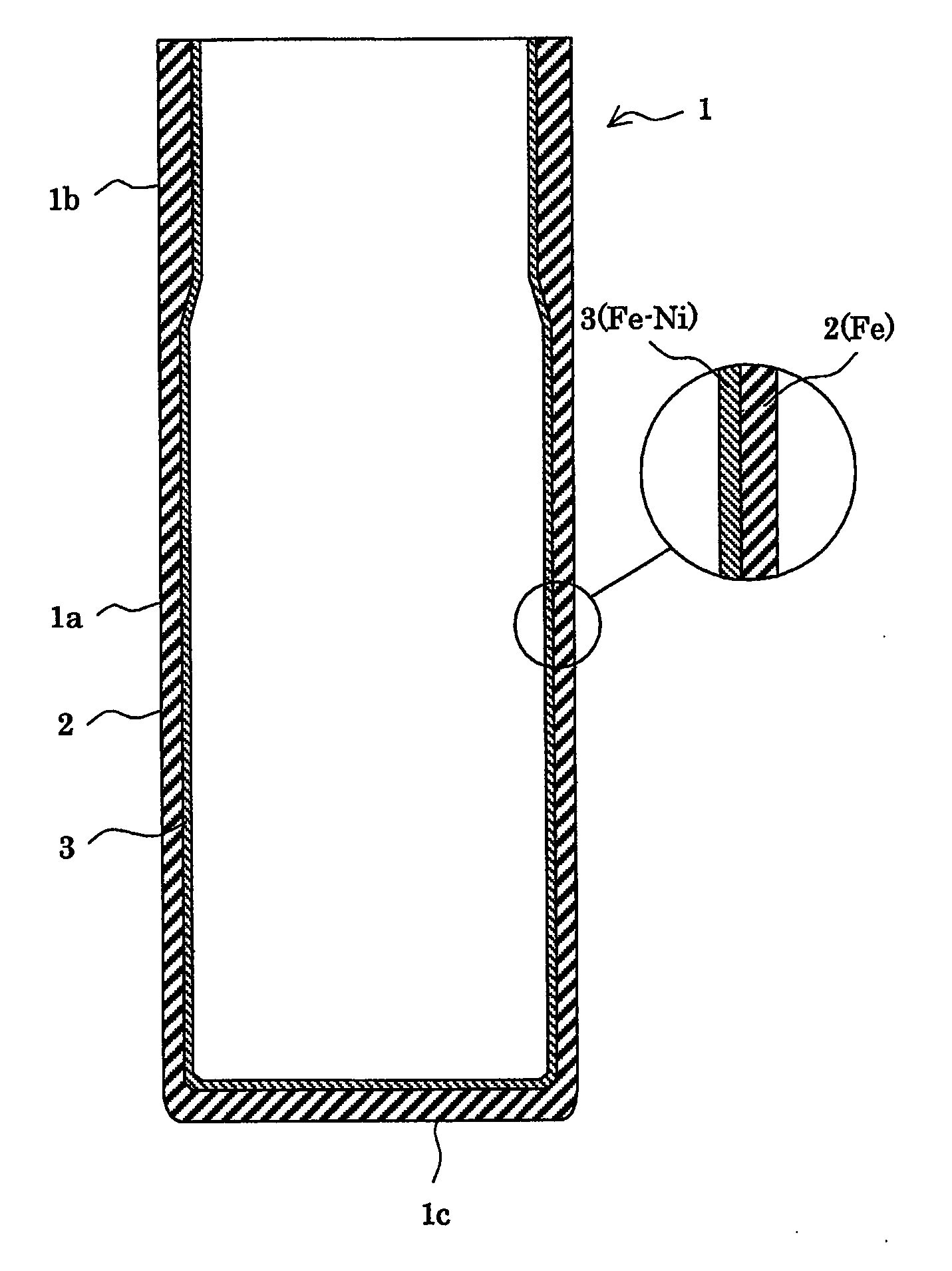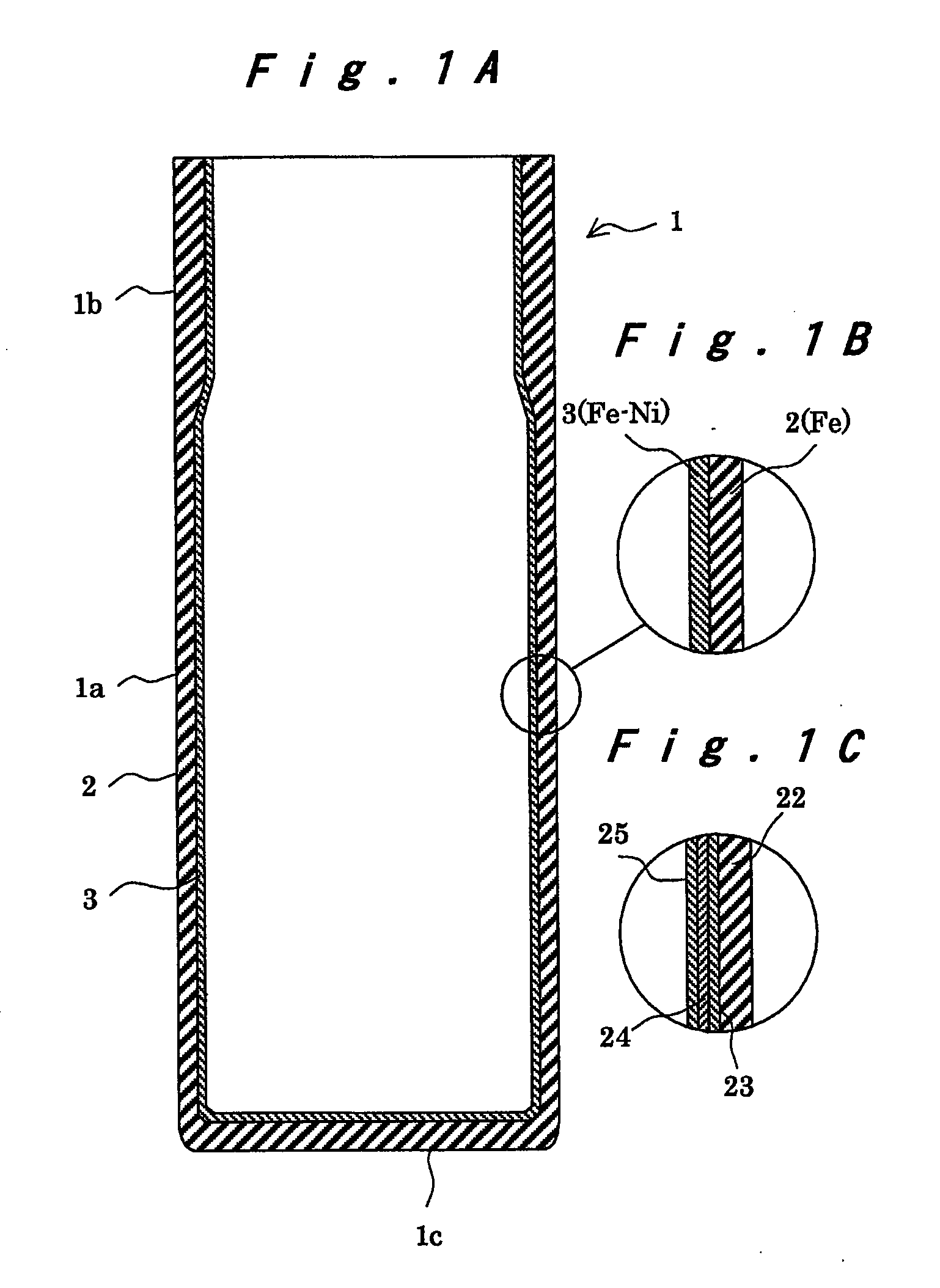Battery case and battery using the same
a battery and case technology, applied in the field of battery cases, can solve problems such as leakage of electrolyte, and achieve the effects of excellent leakage resistance, reduced amount of ni used, and high corrosion resistan
- Summary
- Abstract
- Description
- Claims
- Application Information
AI Technical Summary
Benefits of technology
Problems solved by technology
Method used
Image
Examples
Embodiment Construction
[0025]Hereinafter, best embodiments of the present invention will be described with reference to the drawings.
[0026]FIG. 1A shows a vertical cross-sectional view of a battery case 1 according to an embodiment. The battery case 1 has a closed-end cylindrical shape and is formed such that a sealing section 1b on the opening end side of a side circumferential portion 1a and a bottom section 1c have respective thicknesses greater than the thickness of the side circumferential portion 1a. As shown in FIG. 1B, an Fe—Ni diffusion layer 3 is formed on the inner surface of the battery case 1, i.e., on the surface of a steel plate 2.
[0027]Preferably, the steel plate 2 used for producing the battery case 1 contains Fe in an amount of 98 percent by weight or more. The steel plate 2 contains, in addition to Fe, trace amounts of components such as C (carbon), Si (silicon), Mn (manganese), N (nitrogen), P (phosphorus), Al (aluminum), Ni (Nickel), and Cr (chromium). In the present embodiment, a plu...
PUM
| Property | Measurement | Unit |
|---|---|---|
| thickness | aaaaa | aaaaa |
| thick | aaaaa | aaaaa |
| thickness | aaaaa | aaaaa |
Abstract
Description
Claims
Application Information
 Login to View More
Login to View More - R&D
- Intellectual Property
- Life Sciences
- Materials
- Tech Scout
- Unparalleled Data Quality
- Higher Quality Content
- 60% Fewer Hallucinations
Browse by: Latest US Patents, China's latest patents, Technical Efficacy Thesaurus, Application Domain, Technology Topic, Popular Technical Reports.
© 2025 PatSnap. All rights reserved.Legal|Privacy policy|Modern Slavery Act Transparency Statement|Sitemap|About US| Contact US: help@patsnap.com



